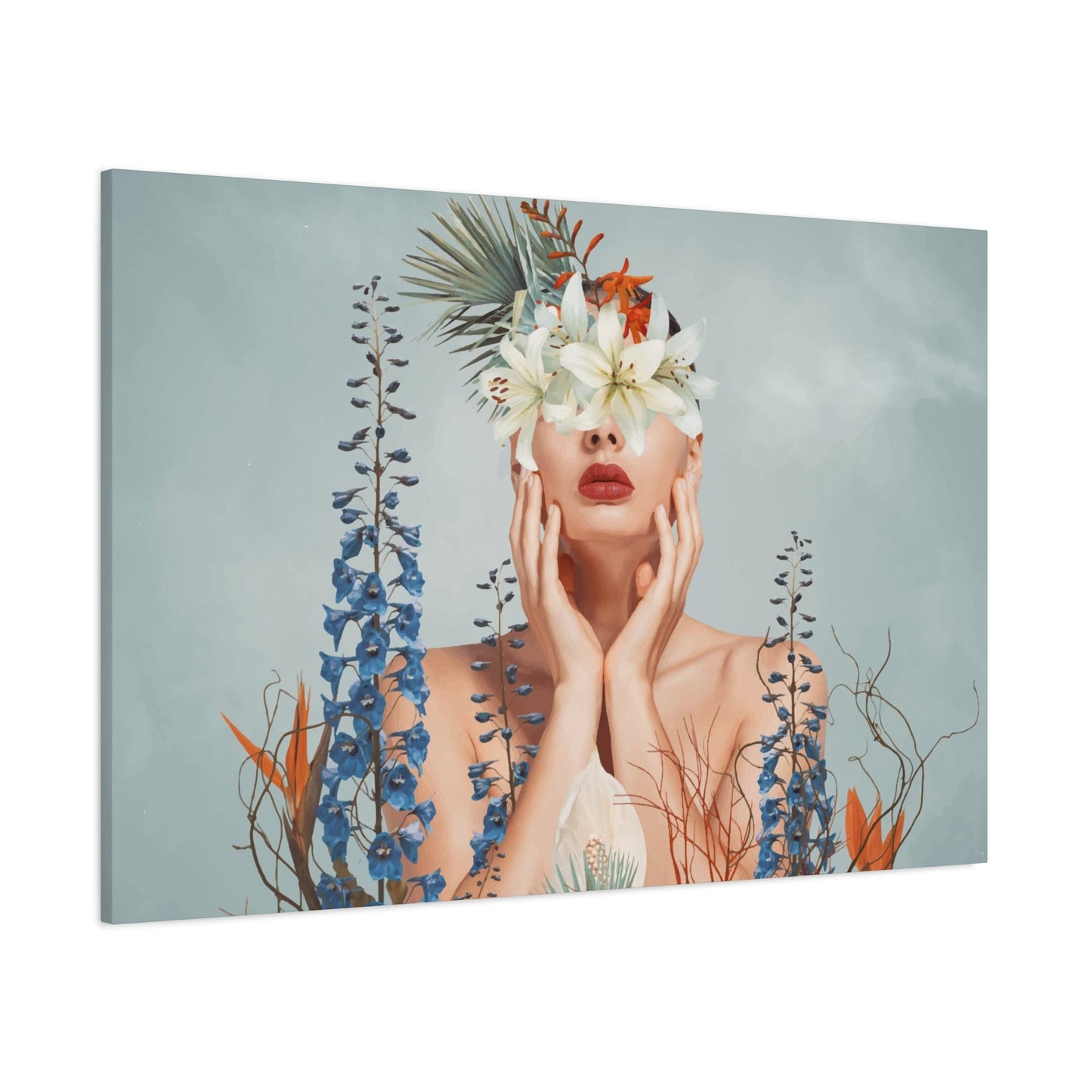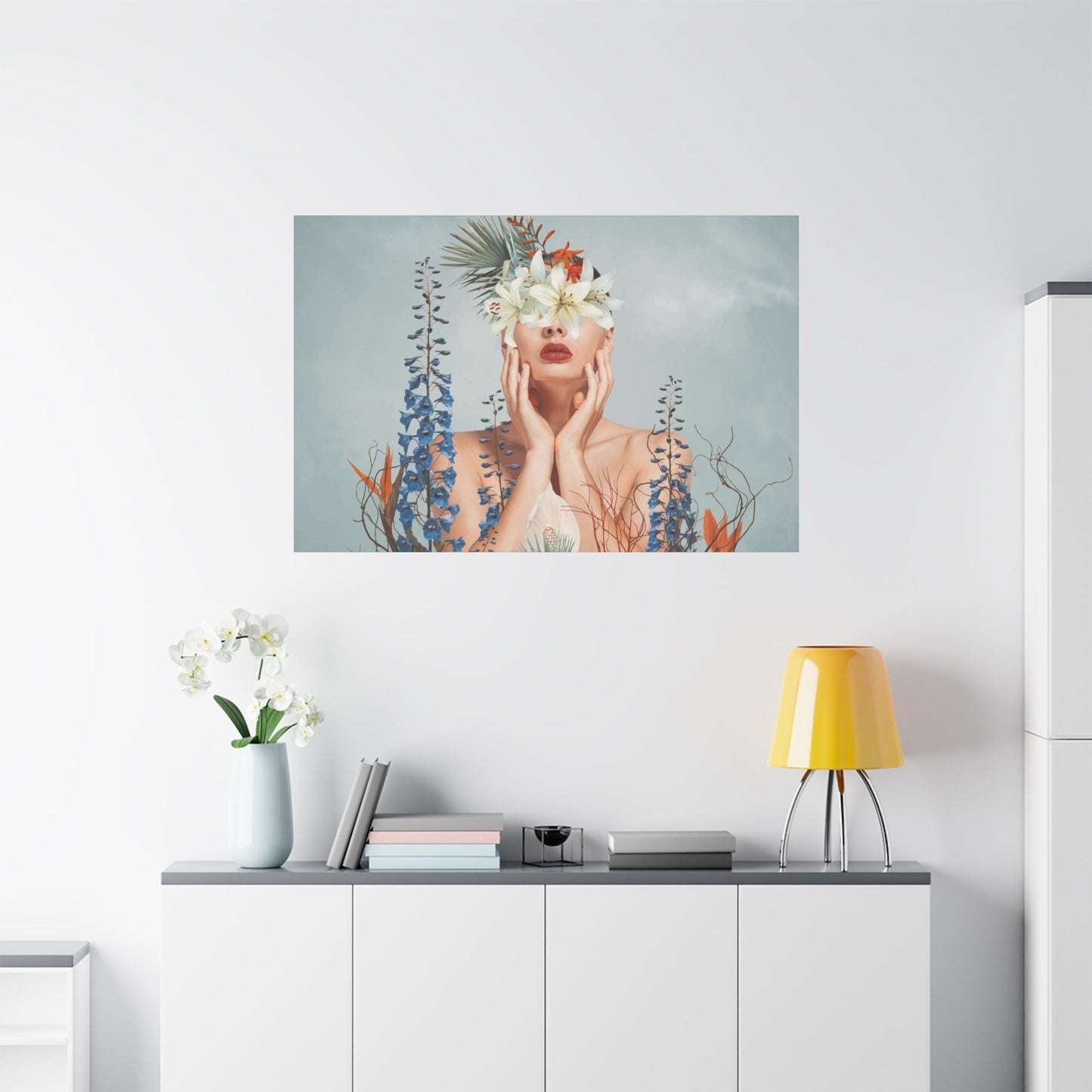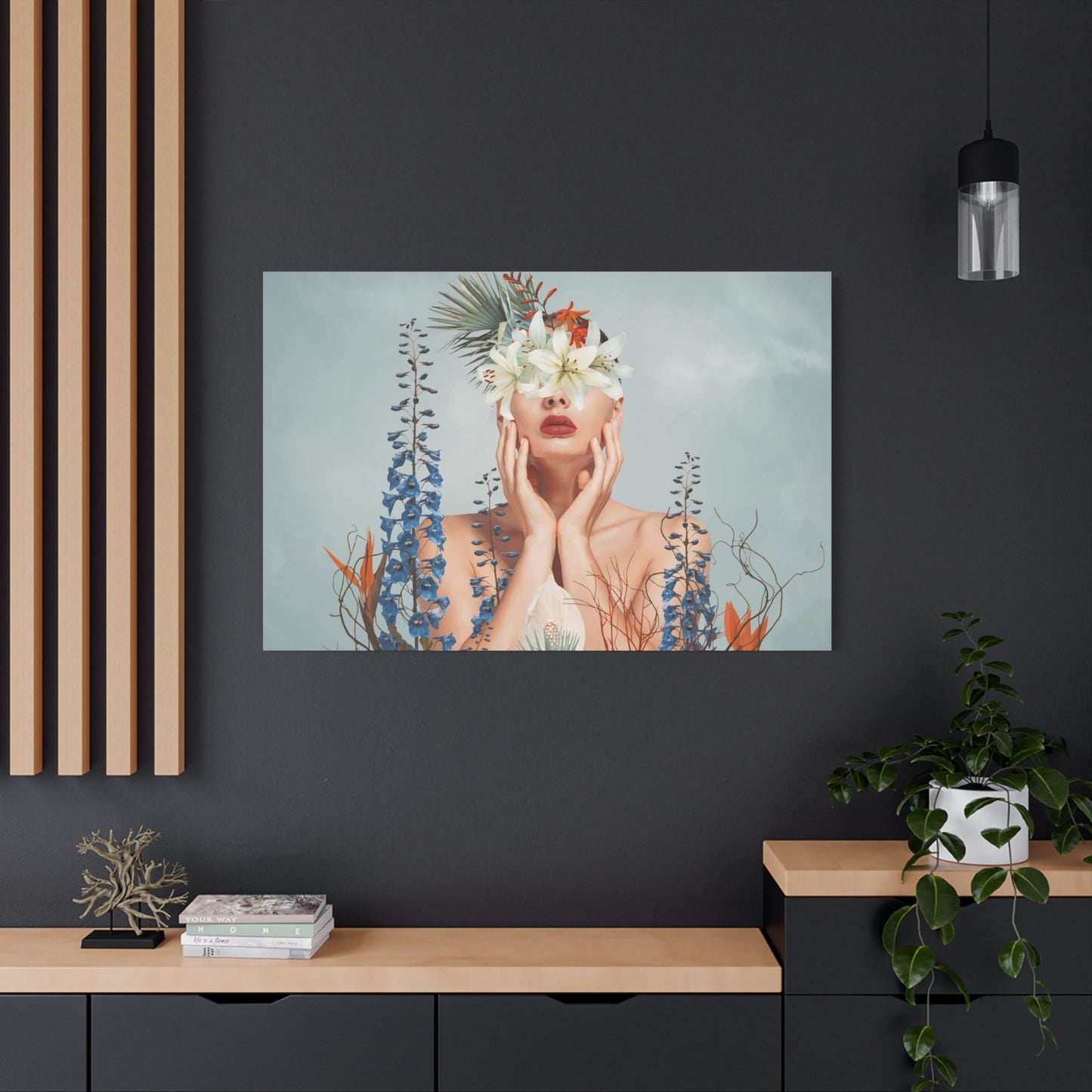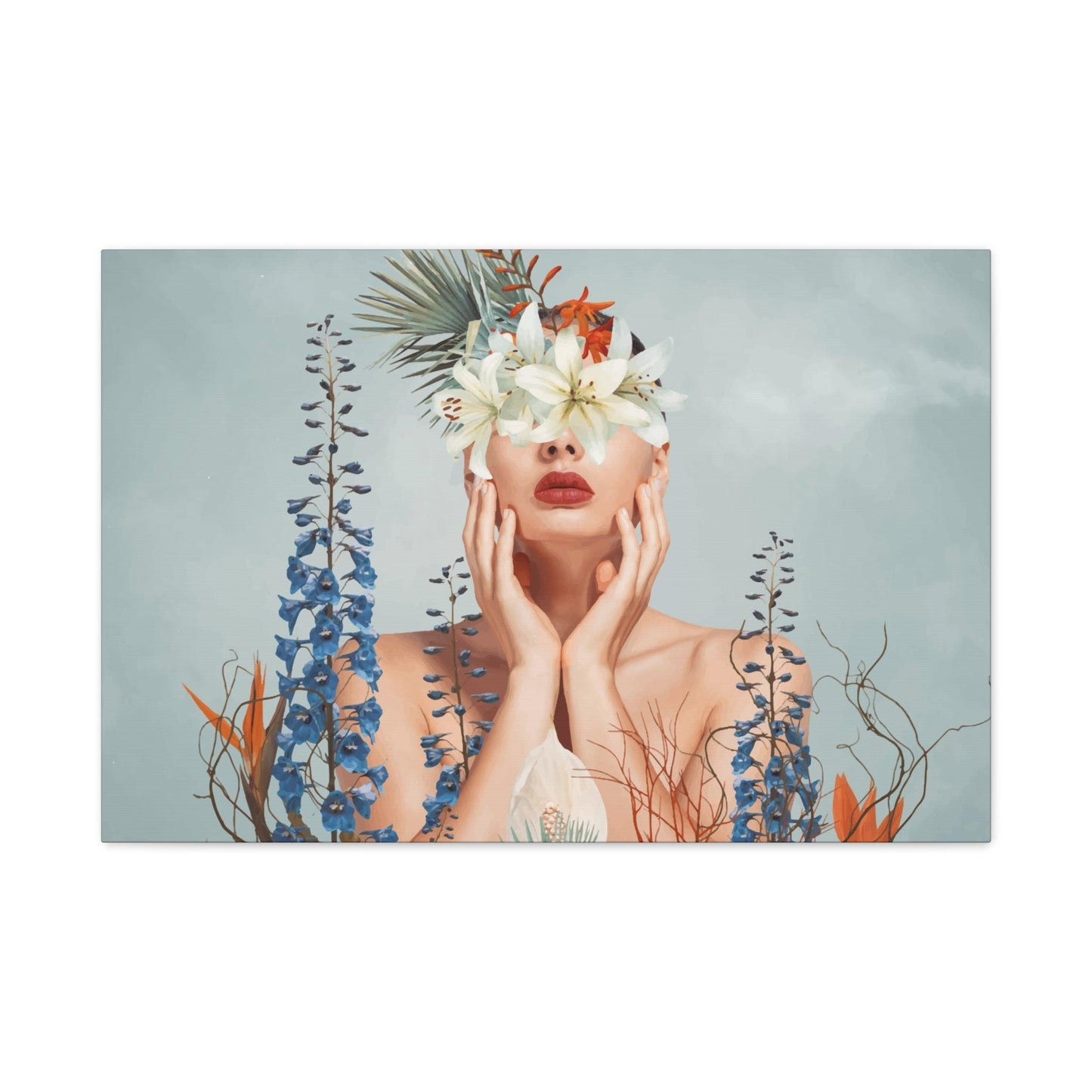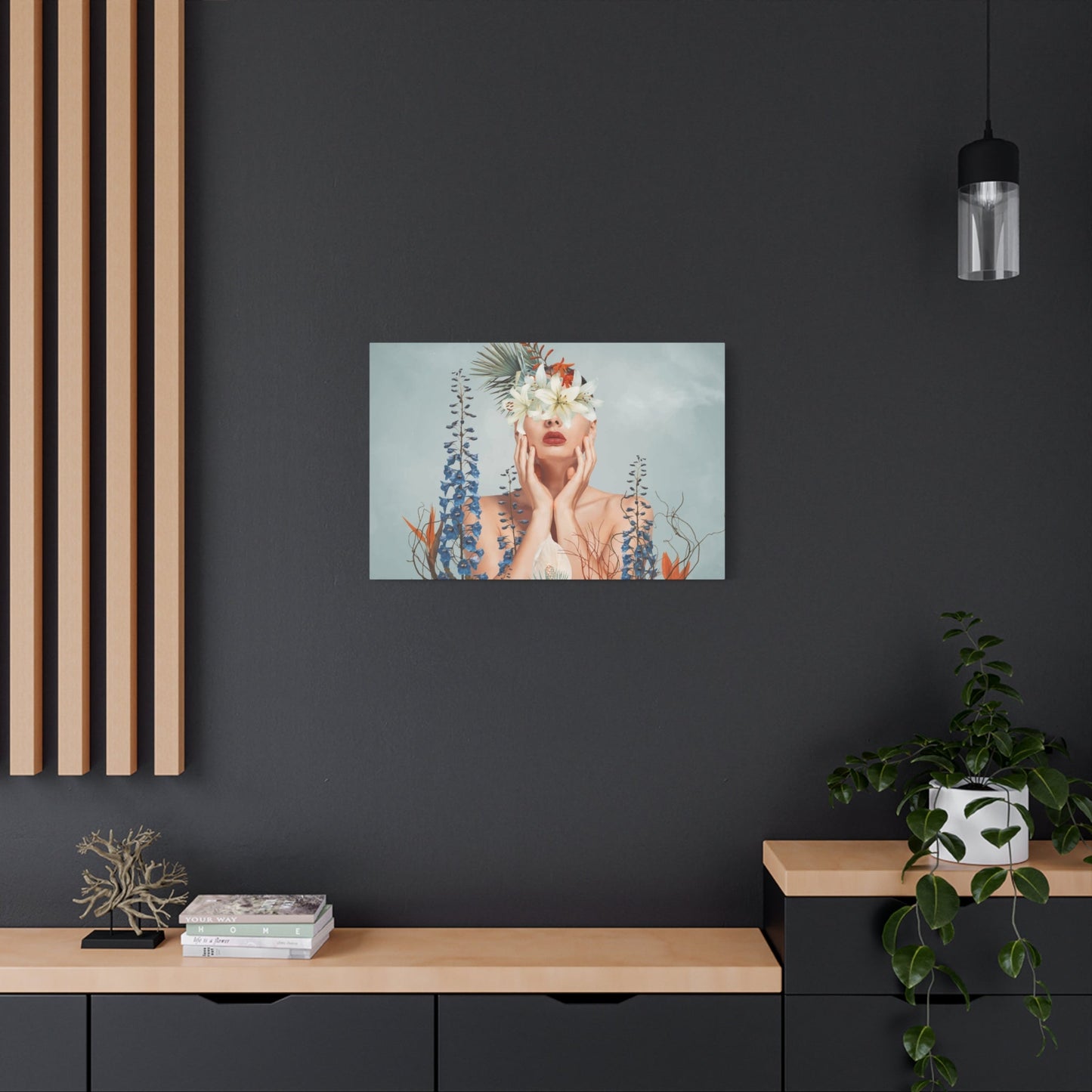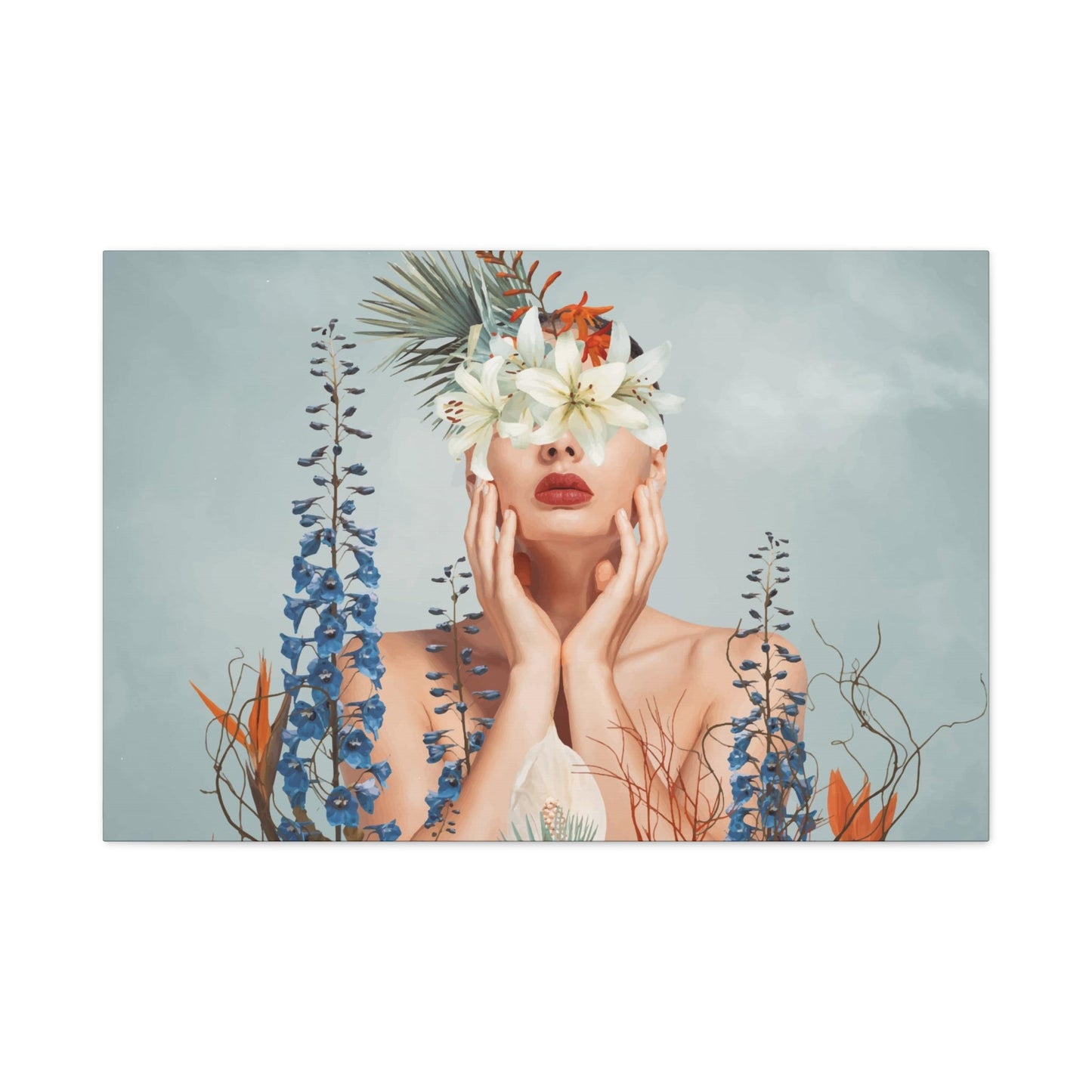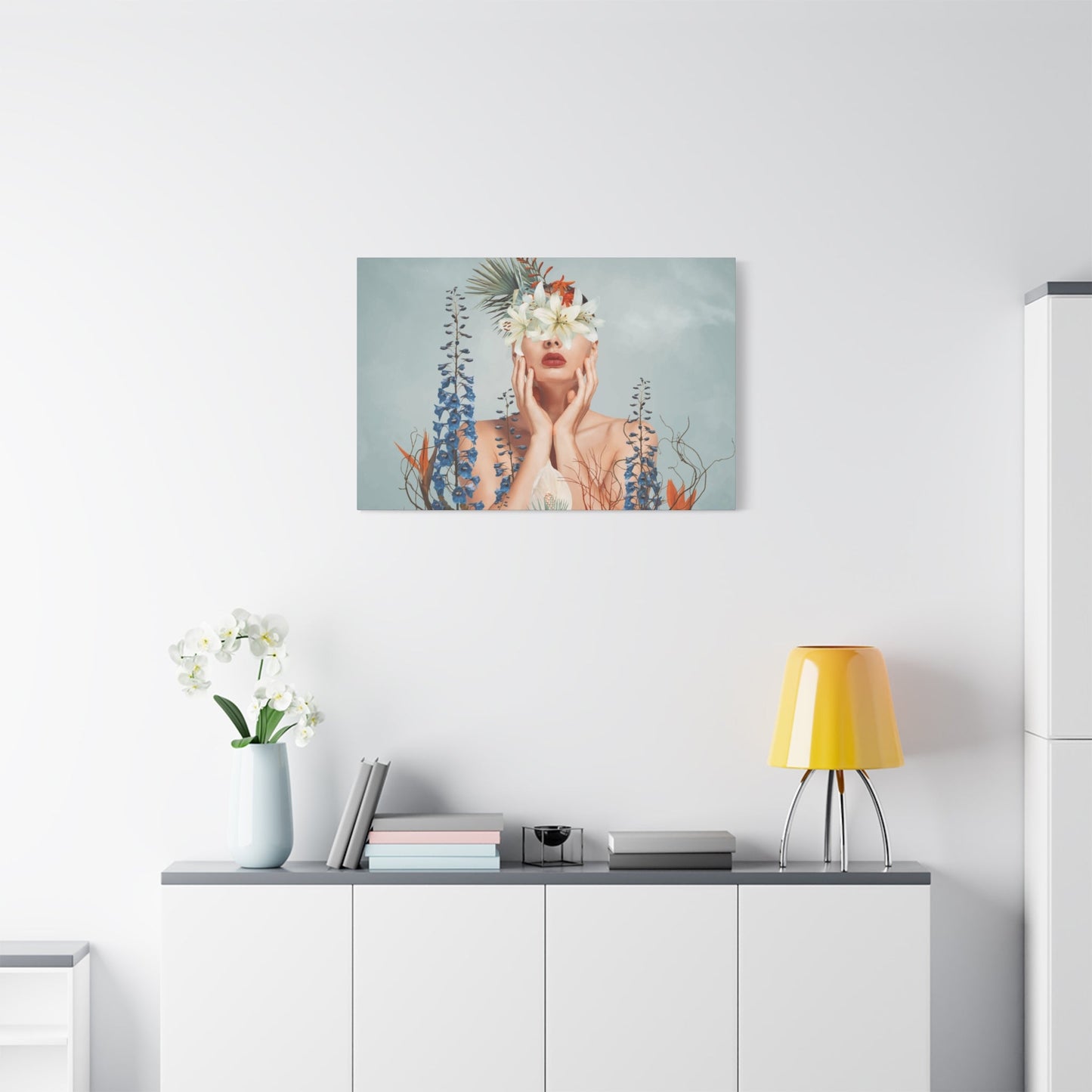Women Supremacy Wall Art: A Comprehensive Guide to Celebrating Female Strength Through Canvas
The world of interior design has witnessed a remarkable transformation in recent years, with an increasing number of homes and workspaces embracing artwork that showcases the magnificence and resilience of women. This artistic movement goes beyond mere decoration, serving as a powerful statement about equality, strength, and the celebration of feminine excellence. When you incorporate visual representations of female empowerment into your living or working environment, you create more than just aesthetic appeal. You establish a space that resonates with purpose, inspiration, and the acknowledgment of women's contributions throughout history and in contemporary society.
The significance of displaying such artwork extends into multiple dimensions of our daily lives. These pieces serve as constant reminders of the battles fought, victories won, and the ongoing journey toward complete equality. They inspire young girls to dream bigger, encourage women to pursue their ambitions fearlessly, and remind everyone of the invaluable role women play in shaping our world. The visual impact of these artworks creates conversation starters, prompts reflection, and reinforces the message that female strength deserves recognition and celebration in all its forms.
Creating an environment that reflects these values through carefully selected artwork demonstrates a commitment to progressive thinking and social awareness. Whether displayed in private residences, corporate offices, educational institutions, or public spaces, these visual tributes to feminine power contribute to a cultural shift that values diversity, equality, and the unique perspectives that women bring to every aspect of human endeavor. The psychology behind surrounding ourselves with such imagery cannot be understated, as it influences our thoughts, shapes our attitudes, and reinforces positive beliefs about capability and potential regardless of gender.
Transforming Spaces With Representations of Female Excellence
The incorporation of artwork celebrating women into interior spaces requires thoughtful consideration of various elements including color schemes, size proportions, placement strategies, and thematic coherence. When selecting pieces that honor female achievement and strength, consider how these works will interact with existing décor elements while making their own bold statement. The goal is to create a harmonious environment where the artwork enhances the space without overwhelming it, yet maintains enough visual presence to command attention and convey its intended message effectively.
Contemporary interior design trends increasingly favor authentic expression over generic decoration, making this the perfect time to embrace artwork that holds personal or cultural significance. Pieces depicting female leaders, innovators, artists, and everyday heroes bring depth and meaning to spaces that might otherwise feel sterile or impersonal. The emotional connection viewers develop with such artwork creates a sense of belonging and purpose within the space, transforming ordinary rooms into environments that inspire, motivate, and uplift everyone who enters.
Consider the various styles available when selecting artwork that celebrates women. From photorealistic portraits capturing the determination in a subject's eyes to abstract interpretations of feminine energy, the options are virtually limitless. Some prefer bold, graphic representations that make immediate visual impact, while others gravitate toward subtle, nuanced pieces that reveal their depth upon closer inspection. The key lies in selecting works that resonate personally while complementing the intended atmosphere of the space. A corporate boardroom might benefit from sophisticated portraits of historical female leaders, while a creative studio could embrace more experimental, contemporary interpretations of feminine power.
The placement of these artworks plays a crucial role in their effectiveness. Eye-level positioning ensures maximum engagement, while strategic lighting can enhance details and create dramatic effects that amplify the piece's impact. Grouping multiple works can create a gallery wall effect that tells a comprehensive story, while a single large statement piece might serve as a room's focal point. Consider sightlines, traffic patterns, and viewing distances when determining optimal placement to ensure your chosen artwork receives the attention and appreciation it deserves.
Dynamic Visual Narratives on Display
When we examine the evolution of artistic representations of women, we observe a fascinating journey from traditional, often limiting portrayals to contemporary celebrations of multifaceted feminine identity. Historical art frequently depicted women in passive roles or as objects of beauty, but modern movements have revolutionized these representations. Today's artwork showcasing female empowerment breaks free from these constraints, presenting women as leaders, warriors, thinkers, creators, and agents of change in their own narratives.
This shift reflects broader societal changes in how we perceive and value women's contributions. The artwork available today spans an incredible range of styles, mediums, and messages, each offering unique perspectives on what it means to be a woman in the contemporary world. Some pieces draw inspiration from historical figures who defied convention and paved the way for future generations, while others celebrate everyday acts of strength, resilience, and grace that women demonstrate daily. This diversity ensures that regardless of personal taste or intended message, there exists artwork capable of expressing your vision of feminine empowerment.
The technical execution of these pieces varies dramatically, from traditional oil paintings requiring months of skilled labor to digital prints that democratize access to meaningful art. Mixed media works combine various materials and techniques to create textured, dimensional pieces that engage viewers on multiple sensory levels. Photography-based artwork captures authentic moments of female strength, while illustration and graphic design offer stylized interpretations that can range from whimsical to powerful. Understanding these different approaches helps in selecting pieces that align with both aesthetic preferences and the specific message you wish to convey.
Color psychology plays a significant role in how these artworks communicate their messages. Bold reds might evoke passion and determination, while cooler blues and purples can suggest wisdom and dignity. Earth tones ground the imagery in authenticity and connection to nature, while monochromatic schemes create sophisticated, timeless appeal. The interplay between subject matter and color choices creates layers of meaning that viewers process both consciously and subconsciously, making the selection of appropriate pieces an exercise in understanding visual communication.
Showcasing Determination Through Artistic Media
The canvas has long served as a medium for expressing humanity's deepest values, aspirations, and observations about the world. When artists choose to depict female strength on canvas, they participate in a tradition of visual storytelling that spans centuries while simultaneously contributing to contemporary dialogues about gender, power, and identity. The permanence of canvas work imbues these pieces with a sense of importance and longevity, suggesting that the messages they convey deserve preservation and continued relevance across generations.
Canvas prints offer remarkable versatility in terms of size, finish, and presentation options. Large-scale works create commanding presence in spacious areas, while smaller pieces suit intimate settings or can be grouped to form cohesive collections. The texture of canvas adds depth and interest that flat prints cannot replicate, creating subtle interplay with light that brings the artwork to life throughout the day as natural and artificial lighting conditions change. This dynamic quality ensures that the artwork remains engaging rather than becoming background noise in the space.
The durability of quality canvas ensures that these important messages endure over time. Unlike paper prints that may yellow or deteriorate, properly prepared and protected canvas maintains its visual integrity for decades, making it a worthy investment for those committed to surrounding themselves with meaningful art. This longevity carries symbolic weight as well, suggesting that the values represented in the artwork are not fleeting trends but enduring truths deserving of permanent places in our environments.
Frame selections significantly impact how canvas artwork is perceived and integrated into spaces. Traditional framed presentations create formal, polished appearances suitable for professional environments or classical interior designs. Gallery-wrapped canvas, where the image extends around the edges of the stretcher bars, offers contemporary, streamlined aesthetics that work beautifully in modern spaces. Floating frames create dimensional interest by suspending the canvas slightly away from the wall, adding shadow and depth that enhance the artwork's presence. Each framing approach contributes differently to the overall impact of the piece.
Contemporary Perspectives on Feminine Authority
The concept of feminine authority in art has undergone radical transformation in recent decades. Where previous generations might have struggled to find visual representations of women in positions of power, today's art market offers abundant options celebrating female leadership across all domains. These works challenge outdated stereotypes while proposing new visual languages for expressing competence, authority, and capability in feminine forms. The artistic exploration of these themes contributes to broader cultural conversations about gender roles and the dismantling of limiting beliefs about women's potential.
Modern artists approaching this subject matter bring diverse perspectives shaped by their own experiences, cultural backgrounds, and artistic training. This diversity enriches the available body of work, ensuring that no single narrative dominates the conversation about what female authority looks like. Some artists favor direct, confrontational approaches that demand viewer attention and challenge them to reconsider preconceptions. Others employ subtle symbolism and layered meaning that rewards careful observation and thoughtful interpretation. Both approaches have value in advancing understanding and appreciation of women's roles in shaping society.
The intersection of art and activism becomes particularly relevant when discussing contemporary works celebrating women. Many artists creating in this space view their work as more than aesthetic exercise; they see it as participation in social movements seeking equality and justice. Their artwork serves multiple purposes simultaneously: beautifying spaces, sparking conversations, documenting historical moments, and inspiring action. This multifaceted nature elevates the work beyond simple decoration into the realm of cultural commentary and social engagement.
Exhibition opportunities for such artwork have expanded significantly as galleries, museums, and online platforms recognize public appetite for meaningful, socially conscious art. This increased visibility creates positive feedback loops where rising demand encourages more artists to explore these themes, which in turn generates more high-quality work for collectors and enthusiasts to discover. The democratization of art through digital platforms has been particularly beneficial, allowing artists from diverse backgrounds and locations to share their visions of feminine power with global audiences.
Striking Visual Statements for Interior Environments
Creating impactful interior environments requires understanding how visual elements influence mood, perception, and behavior within spaces. When you introduce artwork celebrating female strength into a room, you fundamentally alter its character and the experiences people have within it. These pieces communicate values, establish tone, and create focal points that organize the visual hierarchy of the space. The psychological effects of surrounding yourself with empowering imagery extend beyond aesthetics into realms of motivation, self-perception, and aspiration.
The scale of artwork relative to the space it occupies dramatically affects its impact. Oversized pieces create drama and immediately capture attention, making them ideal for making bold statements in large, open areas. Medium-sized works offer flexibility and work well in most residential spaces, providing visual interest without overwhelming the room. Smaller pieces excel in creating intimate moments or forming parts of larger groupings that tell complex stories through multiple images. Understanding these scale relationships helps in selecting appropriately sized pieces that fulfill their intended purposes within specific environments.
Lighting design significantly enhances or diminishes artwork's effectiveness. Natural light brings out colors and details in ways that feel organic and ever-changing throughout the day, but must be managed to prevent fading and damage. Artificial lighting offers control and consistency, with options ranging from subtle accent lights that graze the surface to dramatic spotlights that create theatrical presentations. The interplay between artwork and lighting should be considered during the design phase to ensure optimal viewing conditions that do maximum justice to the pieces displayed.
The relationship between artwork and surrounding furnishings requires careful attention to create cohesive rather than cluttered spaces. Color coordination need not mean perfect matching; instead, consider complementary or analogous color schemes that create harmony while maintaining interest. Textural variety across different elements prevents monotony, with smooth canvas surfaces contrasting beautifully against nubby upholstery or rough wood finishes. The goal is creating layers of visual interest that work together rather than competing for attention, with the artwork serving as anchor points around which other elements organize.
Portraiture as Testament to Female Achievement
Portrait artwork specifically focused on individual women offers unique opportunities for creating personal connections between viewers and subjects. When we gaze upon a carefully rendered face, we engage with the humanity, experience, and essence of the person represented in ways that abstract or symbolic artwork cannot replicate. These portraits serve as bridges across time and circumstance, allowing us to meet remarkable women whose stories deserve remembrance and celebration. The intimacy of portraiture makes it particularly effective for creating emotionally resonant displays that move viewers beyond intellectual appreciation into deeper engagement.
The artistic choices involved in creating portraits significantly impact how subjects are perceived and understood. Pose and expression convey volumes about personality, mood, and the message the artist wishes to communicate. Direct eye contact creates confrontational, engaging experiences where viewers feel personally addressed, while averted gazes suggest introspection or focus beyond the immediate moment. Body language, even in works showing only faces and shoulders, communicates confidence, vulnerability, determination, or serenity through subtle cues that skilled artists master.
Historical portraits of pioneering women offer educational value alongside their aesthetic contributions. These works preserve the likenesses of individuals who might otherwise be forgotten, ensuring that their contributions remain visible and acknowledged. Contemporary portraits of current leaders and changemakers document our present moment for future generations while celebrating achievements as they occur. Both approaches serve important functions in maintaining continuity of women's stories and ensuring that their accomplishments receive proper recognition.
The evolution of portrait styles from classical realism to contemporary interpretations reflects changing attitudes about representation and identity. Hyperrealistic portraits demonstrate technical mastery while capturing subjects with photographic accuracy. Impressionistic approaches sacrifice detail for emotional impact and atmospheric quality. Abstract and cubist-influenced portraits challenge viewers to engage actively with the work, piecing together fragmented representations into coherent wholes. Each style offers different strengths in conveying aspects of identity, personality, and significance.
Architectural Integration of Inspirational Visuals
Successfully integrating empowering artwork into built environments requires understanding architectural principles and how two-dimensional works interact with three-dimensional spaces. Architectural features such as windows, doorways, columns, and built-in elements create frameworks within which artwork must fit both physically and conceptually. Working with rather than against these features results in installations that feel intentional and harmonious rather than awkwardly placed or fighting the space.
Scale and proportion principles from architecture apply equally to artwork selection and placement. The golden ratio and other classical proportions can guide decisions about sizing and positioning to create naturally pleasing arrangements. Consideration of sight lines ensures that artwork is visible and appreciable from key vantage points within and approaching the space. Traffic flow analysis prevents placement in locations where pieces might be obscured, damaged, or simply overlooked due to positioning in rarely observed areas.
Architectural styles suggest appropriate artwork approaches, though creative contrast can also produce striking results. Classical architecture with traditional moldings and formal proportions might pair beautifully with either period-appropriate portraiture or create interesting tension through juxtaposition with contemporary graphic works. Modern, minimalist spaces provide clean backdrops that allow artwork to shine without visual competition, making them ideal for showcasing bold, statement pieces. Industrial spaces with exposed structural elements benefit from artwork that either complements the raw aesthetic or softens it with more refined imagery.
Ceiling height significantly impacts how artwork is perceived and what sizes work effectively in space. Standard eight-foot ceilings limit options compared to generous ten or twelve-foot heights that accommodate larger pieces and more dramatic installations. Vertical space above doorways and windows often goes unused but presents opportunities for creative displays that draw the eye upward and make rooms feel more spacious. Understanding and working with these architectural realities ensures that artwork enhances rather than fights against the inherent characteristics of the space.
Thematic Collections for Narrative Impact
Developing cohesive collections of artwork around specific themes creates opportunities for storytelling and layered meaning that single pieces cannot achieve alone. When multiple works exploring different aspects of feminine empowerment are grouped together, they create dialogues between images that deepen understanding and appreciation. These collections can trace historical progressions, explore diverse cultural perspectives, or examine various manifestations of strength and leadership across different contexts and circumstances.
Building meaningful collections requires strategy and patience, as finding pieces that work together while maintaining individual interest demands careful curation. Some collectors focus on specific artistic styles, ensuring visual coherence through consistent approaches to color, composition, and technique. Others prioritize thematic consistency while embracing stylistic diversity, creating eclectic collections united by subject matter rather than aesthetic similarity. Both approaches have merit, and the choice depends on personal preference and the intended impact of the collection.
The arrangement of collections dramatically affects their narrative flow and visual impact. Chronological arrangements tell stories of progression and evolution over time. Thematic groupings organize works by subject matter or message, creating focused explorations of specific ideas. Stylistic arrangements showcase different artistic approaches to similar themes, highlighting the diversity of visual languages artists employ. Considering these organizational strategies during both acquisition and installation phases results in more coherent, impactful displays.
Expanding collections over time allows for evolution and refinement of focus as interests develop and new works become available. Starting with core pieces that define the collection's essence provides foundation for future additions that complement and expand upon initial themes. Regular reassessment ensures that collections remain relevant and meaningful rather than becoming static accumulations. The living nature of well-curated collections keeps spaces fresh and provides ongoing opportunities for discovery and engagement even with familiar pieces.
Energizing Environments Through Visual Expression
The energy of a space is profoundly influenced by the visual elements within it, and artwork depicting feminine strength carries particularly potent energetic qualities. These pieces radiate determination, confidence, grace, and power that permeate environments and affect everyone who enters. Creating spaces that energize rather than drain requires intentional selection of elements that uplift, inspire, and reinforce positive mindsets and attitudes. Artwork celebrating women excels in this capacity, serving as perpetual sources of motivation and encouragement.
Color psychology becomes especially relevant when discussing how artwork influences space energy. Warm colors like reds, oranges, and yellows generate feelings of excitement, passion, and vitality, making them excellent choices for spaces intended to energize and motivate. Cool colors including blues, greens, and purples promote calm, focus, and contemplation, better suited for spaces where concentration and thoughtful reflection are desired. Understanding these psychological effects allows for strategic artwork selection that supports the intended function and feeling of each space.
The subject matter's emotional resonance contributes significantly to spatial energy. Dynamic poses suggesting movement and action create feelings of momentum and progress. Serene, composed subjects promote tranquility and groundedness. Celebratory scenes generate joy and optimism. The facial expressions, body language, and overall mood captured in artwork directly influence the emotional atmosphere of spaces, making selection of appropriate pieces crucial for achieving desired environmental effects.
Regular rotation or refresh of displayed artwork prevents visual fatigue and maintains energetic vitality within spaces. Even beloved pieces can become background noise through overfamiliarity, losing their power to inspire and uplift. Periodic changes, whether dramatic replacements or subtle rearrangements, renew attention and appreciation while allowing different messages and aesthetics to take center stage. This practice keeps environments dynamic and responsive to evolving needs and preferences.
Distinguished Female Representation in Visual Culture
The representation of women in visual culture has historically reflected and reinforced societal attitudes about gender roles, capabilities, and value. Contemporary movements toward empowering, multidimensional portrayals of women in art constitute important corrections to centuries of limiting imagery. Today's artwork celebrates the full spectrum of feminine experience, from nurturing and collaborative aspects to fierce, competitive, and authoritative dimensions. This holistic approach acknowledges that women, like all humans, contain multitudes and cannot be reduced to single narratives or archetypes.
Diverse representation within women-focused artwork ensures that multiple perspectives, experiences, and identities receive visibility and celebration. Works featuring women of different ethnicities, ages, body types, abilities, and backgrounds challenge narrow beauty standards while expanding our collective understanding of what strength and success look like. This inclusivity serves both aesthetic and social justice functions, creating richer, more interesting visual landscapes while promoting equity and recognition for all women.
The artists creating this work come from equally diverse backgrounds, bringing unique perspectives shaped by their individual experiences and cultural contexts. Supporting artists from underrepresented groups ensures that a wide range of voices contributes to conversations about feminine empowerment and how it should be visually expressed. This diversity enriches the available body of work while providing economic opportunities to creators who have historically faced barriers in the art world.
Critical engagement with representations of women in art involves asking questions about whose stories are told, how they are framed, and what messages are communicated through artistic choices. Thoughtful collectors consider these dimensions when selecting work, seeking pieces that represent women authentically and respectfully rather than perpetuating problematic tropes or stereotypes. This critical approach elevates the quality and meaningfulness of collections while ensuring they align with stated values regarding equality and empowerment.
Sophisticated Displays for Professional Settings
Corporate and professional environments benefit tremendously from thoughtfully selected artwork celebrating feminine achievement and leadership. These spaces communicate organizational values to employees, clients, and visitors, making visual elements powerful tools for expressing commitment to diversity, equality, and inclusive excellence. Artwork featuring women in positions of authority and demonstrating various forms of strength reinforces messages about opportunity and belonging that support recruitment, retention, and cultural development efforts.
Professional spaces require artwork that balances visual impact with appropriate decorum and sophistication. While bold statements have their place, particularly in creative industries or progressive organizations, the artwork must align with brand identity and professional standards. Polished, well-executed pieces in appropriate scales and subjects communicate that the organization values quality and thoughtfulness in all aspects of its presentation. Investment in meaningful artwork demonstrates commitment to creating environments that support and inspire the people working within them.
Strategic placement of artwork in professional settings maximizes impact and engagement. Reception areas and lobbies present opportunities for making strong first impressions through prominent displays that immediately communicate organizational values. Conference rooms benefit from pieces that inspire confidence, collaboration, and innovative thinking. Private offices allow for more personal selections that reflect individual tastes while maintaining professional appropriateness. Break rooms and common areas can feature more relaxed, accessible pieces that provide mental breaks and opportunities for informal engagement with art.
Artwork in professional settings serves multiple functions simultaneously, beautifying spaces while supporting branding, inspiring employees, and demonstrating social consciousness. Return on investment in quality pieces extends beyond aesthetic improvements into realms of talent attraction, employee satisfaction, and reputation management. Organizations known for creating beautiful, meaningful workspaces enjoy advantages in competitive talent markets, as people increasingly prioritize work environments that align with their values and support their wellbeing.
Inspirational Aesthetics for Residential Spaces
Home environments offer maximum freedom for personal expression through artwork selection, allowing residents to surround themselves with images that resonate deeply and reflect their authentic values and aspirations. Residential spaces serve as sanctuaries from external pressures, making the visual elements within them particularly important for supporting mental and emotional wellbeing. Artwork celebrating women transforms houses into homes by infusing spaces with meaning, beauty, and constant reminders of human potential and achievement.
Different rooms within homes serve varied functions and thus benefit from different approaches to artwork selection. Bedrooms, as private retreats, allow for deeply personal choices that might be too intimate for public spaces. Images promoting calm, confidence, or joy create positive psychological frames for beginning and ending each day. Living rooms and family spaces benefit from conversation-starting pieces that reflect household values and create opportunities for discussing important themes with family members and guests. Home offices require artwork that motivates and inspires productivity while maintaining the professional atmosphere necessary for focused work.
The integration of artwork into existing residential décor requires consideration of established color schemes, furniture styles, and overall aesthetic directions. Artwork can either harmonize with existing elements, creating cohesive, unified spaces, or introduce contrasting notes that add interest and prevent monotony. Both approaches have merit depending on desired outcomes and existing conditions. The key lies in intentionality rather than accident, ensuring that artwork selections result from conscious decisions rather than default choices or impulse purchases.
Creating gallery walls or curated collections within homes allows for personal curation that evolves over time. Starting with anchor pieces and building around them creates organic growth that reflects developing tastes and expanding collections. The informal nature of home galleries permits experimentation with arrangements, mixing frames and sizes in ways that might be inappropriate in more formal settings. This flexibility makes homes ideal environments for exploring personal relationships with art and developing curatorial skills.
Cultural Dimensions of Female-Centered Artwork
The celebration of feminine strength takes different forms across various cultural contexts, with each tradition bringing unique perspectives, symbols, and aesthetic approaches. Artwork drawing from diverse cultural sources enriches our understanding of universal themes while honoring specific traditions and histories. Exploring works from various cultural backgrounds expands appreciation for the many ways human societies have understood, depicted, and valued women's contributions throughout history and in contemporary contexts.
Indigenous art traditions often feature strong female figures associated with creation, wisdom, and natural forces, offering perspectives that challenge Western dichotomies between masculine and feminine energies. These works connect feminine power to fundamental forces of nature and creation, suggesting different frameworks for understanding gender and authority. Incorporating such pieces into collections creates opportunities for learning about and honoring diverse worldviews while building more comprehensive understandings of feminine strength.
Asian artistic traditions bring sophisticated approaches to representing grace, wisdom, and spiritual authority in feminine forms. From the serene power of Buddhist and Hindu goddesses to the fierce strength of warrior women in Japanese prints, these traditions offer rich visual languages for expressing multifaceted feminine power. The aesthetic refinement characteristic of many Asian art forms adds layers of beauty and technical excellence that enhance their impact and appeal.
African art traditions showcase strong women as community leaders, spiritual authorities, and cultural bearers, with bold, expressive styles that convey power and presence. The vitality and directness of much African-inspired artwork make it particularly effective for creating impactful displays. Contemporary African artists working in this tradition bring fresh perspectives while honoring ancestral approaches to representing feminine strength and dignity.
Minimalist Approaches to Powerful Messaging
Minimalist aesthetic principles prove remarkably effective for conveying messages about feminine strength through careful attention to essential elements and elimination of unnecessary details. This approach relies on quality over quantity, investing meaning in every line, form, and color choice while stripping away anything that doesn't serve the central message. The result is artwork that communicates with clarity and impact, creating strong impressions through refined, intentional compositions rather than overwhelming detail.
The power of negative space in minimalist work cannot be overstated. Empty areas surrounding subjects create breathing room that focuses attention and allows subjects to command full consideration. This spatial generosity suggests confidence and authority, as if the subject's presence is so commanding that excessive embellishment would be superfluous. The sophisticated restraint of minimalist approaches appeals to contemporary sensibilities while creating timeless works that remain relevant across changing design trends.
Color restriction in minimalist work forces viewers to engage with form, composition, and subject matter without the distraction of complex color relationships. Monochromatic schemes create unity and elegance while directing attention to the essential characteristics of subjects. Limited palettes of two or three colors create visual interest through carefully controlled contrasts while maintaining overall simplicity. These restrained approaches to color demonstrate that emotional impact and powerful messaging need not rely on visual complexity.
Line quality and composition assume heightened importance in minimalist work where fewer elements must accomplish communication goals typically supported by additional details. Clean, confident lines suggest clarity and purpose, while compositional balance creates psychological satisfaction that supports the work's message. The technical skill required to execute effective minimalist work is considerable, as there is nowhere to hide imperfections or compensate for weak compositions with additional elements.
Historical Context and Contemporary Relevance
Understanding the historical context of women-focused artwork enriches appreciation and deepens engagement with contemporary pieces. The evolution from limited, often objectifying historical representations to today's empowering portrayals reflects broader social progress while acknowledging ongoing struggles for full equality. Contemporary artwork celebrating women builds upon foundations laid by pioneering feminist artists while incorporating new perspectives and responding to current challenges and opportunities.
The feminist art movement of the 1960s and 1970s challenged male-dominated art world structures while creating new visual languages for expressing feminine experience and power. Artists like Judy Chicago, Faith Ringgold, and others opened spaces for conversations about gender, representation, and artistic authority that continue influencing contemporary practice. Their courage in addressing previously taboo subjects and challenging establishment gatekeepers paved the way for today's more inclusive, diverse artistic landscape.
Contemporary artists working in this tradition benefit from expanded opportunities and audiences while facing different challenges related to digital culture, globalization, and evolving understandings of gender and identity. Their work responds to current movements for equality while incorporating new media, technologies, and distribution methods that democratize access to art. The conversation between historical foundations and contemporary innovations creates dynamic, evolving artistic fields that remain relevant and responsive to current needs.
Collecting artwork with awareness of its historical and contemporary context adds intellectual depth to aesthetic appreciation. Understanding the lineages, influences, and conversations surrounding pieces enhances their meaning and significance within collections. This knowledge transforms casual observation into informed engagement, creating richer experiences with artwork that extend beyond surface-level visual pleasure into realms of cultural understanding and social awareness.
Considerations for Artwork Selection
The technical aspects of artwork significantly affect both its initial impact and long-term satisfaction. Understanding these elements empowers informed decision-making when building collections or selecting individual pieces. Print quality, substrate materials, finishing options, and archival considerations all contribute to artwork's appearance, durability, and value over time. Attention to these details ensures that investments in meaningful pieces yield lasting returns in terms of both aesthetic pleasure and physical longevity.
Print resolution and quality determine how successfully artwork reproduces original images or digital files. High-resolution printing preserves detail and creates smooth color transitions, while lower quality results in visible pixelation or banding that diminishes impact. Understanding dots per inch measurements and viewing distances helps in evaluating whether print quality meets standards appropriate for intended display conditions. Professional-grade printing equipment and processes produce markedly superior results compared to consumer-level output.
Substrate selection affects both appearance and durability. Canvas remains popular for its texture and traditional associations but varies widely in quality based on material composition and weight. Paper stocks range from economical options suitable for temporary displays to museum-quality archival papers designed for century-long preservation. Metal and acrylic substrates offer contemporary aesthetics with excellent durability, though at higher price points. Matching substrate to intended use and environment ensures optimal performance and satisfaction.
Finishing options including varnishes, lamination, and protective coatings extend artwork lifespan while affecting appearance. Glossy finishes create vibrant colors and deep blacks but can produce glare in certain lighting conditions. Matte finishes minimize reflections while creating subtle, sophisticated presentations. Textured finishes add dimensional interest but may complicate cleaning and maintenance. Understanding these tradeoffs allows for selections that balance aesthetic preferences with practical considerations.
Creating Gallery Experiences at Home
Transforming residential spaces into gallery-like environments elevates everyday living while creating opportunities for meaningful engagement with art. This approach goes beyond simply hanging pictures to thoughtfully curating experiences that showcase artwork effectively while maintaining livability and comfort. Professional gallery techniques adapted for home use create sophisticated presentations that honor the artwork while supporting its integration into daily life.
Wall preparation sets the foundation for gallery-quality presentations. Fresh paint in carefully selected neutral tones provides clean backgrounds that showcase artwork without competing for attention. Consideration of existing architectural elements, trim work, and other fixed features ensures that artwork complements rather than conflicts with structural elements. Attention to wall texture and finish creates appropriate surfaces for mounting artwork securely while maintaining desired aesthetic effects.
Lighting design makes or breaks gallery presentations, with proper illumination revealing details and creating drama while poor lighting diminishes even the finest works. Track lighting systems offer flexibility for adjusting spots as artwork changes, while picture lights create focused illumination for individual pieces. Natural light provides beautiful, changing illumination but requires careful management through window treatments and UV-protective glazing to prevent damage. Combining natural and artificial sources creates dynamic presentations that adapt to different times of day and viewing conditions.
Spacing and arrangement principles from professional galleries apply equally to home installations. Adequate spacing between pieces prevents visual crowding while allowing each work breathing room. Consistent hanging heights create unified presentations across multiple walls and rooms. Grouping strategies including grid arrangements, salon-style groupings, and linear sequences create different effects suited to various spaces and collections. Applying these professional standards elevates home displays while maintaining the comfort and personality essential to residential environments.
Investment Value and Long-Term Appreciation
Quality artwork celebrating feminine empowerment represents both aesthetic and financial investment, with potential for appreciation over time as social movements increase demand for meaningful, message-driven pieces. Understanding factors that influence artwork value helps collectors make informed decisions while building collections that provide lasting satisfaction and potential financial returns. While aesthetic appeal and personal resonance should drive primary selection criteria, awareness of value considerations adds another dimension to the collecting experience.
Artist reputation significantly influences both current and future values. Established artists with exhibition histories and critical recognition command higher prices but offer more predictable value trajectories. Emerging artists present opportunities for acquiring quality work at accessible prices, with potential for significant appreciation if their careers develop successfully. Researching artists' backgrounds, training, and career trajectories provides insights into likely value development while supporting informed decision-making.
Limited editions and original works generally hold value better than unlimited prints or mass-produced pieces. Scarcity creates value in art markets, making numbered editions and unique works more desirable to collectors. Documentation including certificates of authenticity, edition numbers, and artist signatures supports provenance and value claims. Maintaining this documentation carefully ensures that investment value is protected and can be demonstrated if pieces are later sold or donated.
Condition preservation protects initial investments while supporting long-term value maintenance or appreciation. Proper framing with archival materials prevents degradation, while appropriate environmental controls including temperature, humidity, and light management extend artwork lifespans indefinitely. Regular inspection identifies emerging issues before they become serious problems, and professional conservation interventions address damage when it occurs. These stewardship practices demonstrate responsible collecting while protecting financial and aesthetic value.
Digital Age Opportunities and Challenges
The digital revolution has transformed how artwork is created, distributed, discovered, and collected, with profound implications for those interested in pieces celebrating feminine empowerment. Online platforms connect artists and collectors globally, democratizing access while creating new challenges related to quality assessment, authenticity verification, and the proliferation of low-quality reproductions. Navigating this landscape successfully requires understanding both the opportunities and pitfalls of digital-age art collecting.
Online marketplaces and artist websites provide unprecedented access to diverse works from creators worldwide. This accessibility particularly benefits those seeking specific themes or styles that might be difficult to find through local galleries. Virtual exhibitions and portfolios allow extensive exploration without geographic limitations, while secure payment systems and shipping services facilitate transactions across distances. These conveniences have opened art collecting to much broader audiences while supporting artists who previously lacked access to traditional gallery representation.
Quality assessment becomes more challenging when viewing artwork through screens rather than in person. Colors may appear differently on various devices, while scale, texture, and subtle details cannot be fully appreciated through photographs. Reputable sellers provide detailed images, dimension information, and accurate descriptions that help bridge this gap, but nothing replaces seeing work in person when possible. Some platforms offer return policies that mitigate risks by allowing in-person evaluation after delivery.
Authentication and originality verification require particular attention in digital contexts where reproduction is effortless and widespread. Certificates of authenticity from artists or authorized dealers provide important documentation, while blockchain technologies increasingly offer secure verification methods. Understanding what distinguishes original works, authorized reproductions, and unauthorized copies protects collectors from fraudulent transactions while ensuring that artists receive proper compensation for their creations.
Dimensions of Art Collection
Building collections of artwork celebrating women offers ongoing educational opportunities that extend far beyond aesthetic appreciation. These pieces serve as gateways to learning about history, social movements, artistic techniques, cultural traditions, and individual stories that might otherwise remain unknown. Approaching artwork with curiosity about its contexts and meanings transforms collecting from passive accumulation into active learning that enriches understanding and appreciation continuously.
Researching the women depicted in portrait and biographical artwork reveals inspiring stories of achievement, perseverance, and contribution that deserve wider recognition. Many pieces honor figures whose accomplishments have been overshadowed or forgotten, making their visual representation an act of historical recovery. Learning about these individuals connects viewers to larger narratives about women's roles in shaping society while providing role models and inspiration for contemporary challenges.
Understanding artistic movements, techniques, and traditions represented in collections develops aesthetic literacy and deeper appreciation for creative choices. Learning to recognize different painting styles, compositional strategies, and symbolic elements enhances viewing experiences while fostering more sophisticated understanding of how visual art communicates meaning. This knowledge accumulates over time, with each new piece adding to a growing foundation of artistic understanding.
Sharing knowledge gained through collecting creates opportunities for educating others while deepening personal understanding. Discussing artwork with family, friends, or guests requires articulating observations and interpretations, a process that clarifies thinking while spreading appreciation to others. These conversations plant seeds that may inspire others to develop their own relationships with meaningful art while contributing to broader cultural conversations about the importance of celebrating women's achievements and potential.
Conclusion
Women supremacy wall art stands as a powerful tribute to the resilience, strength, and empowerment of women across the globe. This genre of canvas art not only celebrates feminine power but also serves as a visual narrative that honors the multifaceted roles women play in society. From fierce warriors and visionary leaders to nurturing mothers and bold innovators, women supremacy wall art captures the diverse dimensions of female strength and courage with authenticity and artistic brilliance.
The allure of this art form lies in its ability to inspire and motivate, transforming walls into galleries of empowerment. Through vivid imagery, symbolic motifs, and dynamic compositions, these canvases showcase the indomitable spirit of women who challenge norms and break barriers. The artwork acts as a daily reminder of the progress made in gender equality and the ongoing journey toward a world where women’s voices are heard, respected, and celebrated.
One of the most striking features of women supremacy wall art is its versatility and emotional depth. Whether featuring abstract representations of female power, realistic portraits of iconic women, or symbolic imagery that speaks to collective struggles and triumphs, this art form resonates deeply with viewers. It evokes feelings of pride, hope, and solidarity, making it a meaningful addition to homes, offices, and public spaces where inspiration and motivation are essential.
Incorporating women supremacy art into interior décor goes beyond mere decoration. It creates an environment that fosters confidence, self-expression, and inclusivity. This type of artwork aligns with contemporary design trends that emphasize storytelling and cultural significance, turning blank walls into vibrant spaces filled with purpose. It complements a variety of décor styles, from modern minimalist settings to eclectic and bohemian interiors, enhancing spaces with both beauty and profound meaning.
Moreover, women supremacy wall art is a celebration of intersectionality and diversity. It highlights the experiences of women from different backgrounds, ethnicities, and identities, emphasizing that strength comes in many forms. This inclusive approach enriches the narrative, making the art relevant and relatable to a broad audience. It invites conversations about empowerment that acknowledge both individual journeys and collective movements.
Artists who create women supremacy canvases often imbue their work with symbolism and cultural references that deepen the impact of the imagery. From powerful gestures and bold colors to intricate patterns and textual elements, these details add layers of meaning that invite viewers to engage thoughtfully with the art. This intentionality elevates women supremacy wall art from mere decoration to a form of activism and celebration rolled into one.
The demand for women supremacy art is also reflective of a larger cultural shift toward recognizing and honoring women’s achievements. As society continues to push for equality and representation, this art serves as both a beacon of progress and a call to action. It motivates individuals and communities to champion women’s rights and foster environments where future generations of girls and women can thrive.
In essence, women supremacy wall art is a visual celebration of female empowerment, resilience, and unity. It enriches spaces by embedding narratives of strength, courage, and hope, reminding us all of the transformative power of women’s voices and actions. By choosing this art form, you make a bold statement about your values and commitment to gender equality.
Ultimately, women supremacy wall art invites viewers to reflect on the incredible journey of women through history and today. It inspires admiration for past accomplishments and excitement for future possibilities. As a cornerstone of modern décor, it not only beautifies spaces but also empowers hearts and minds, making it a vital and uplifting addition to any environment.














